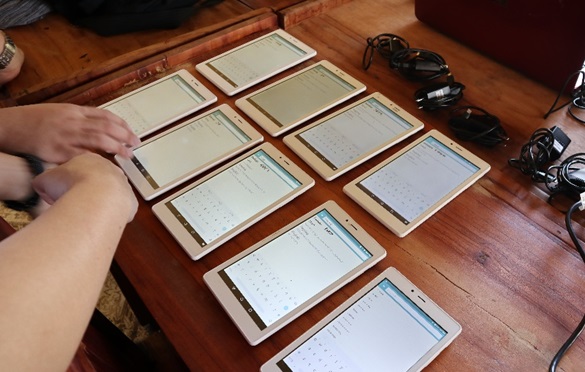“Imagine an endangered language now available on your smartphone.”
This is according to Dr. Rowena Cristina L. Guevara, undersecretary for research and development at the Department of Science and Technology (DOST) in her remarks during a virtual meeting for the “Language Preservation and Documentation of Hanunoo: Saving the Mangyan Culture”, a presentation of a research funded by the DOST-National Research Council of the Philippines (NRCP).

There are 187 Philippine languages, but only 183 are living, while the other four are already extinct. Of the living languages, 175 are indigenous, while eight are non-indigenous. Some 13 languages are endangered and 11 are dying.
The research on language preservation and documentation of Hanunoo, led by Dr. Rochelle Irene Lucas of the De La Salle University, involving an ethnolinguistic vitality study and the creation of mobile electronic-dictionary (e-dictionary), is actually a response to a call of then Department of Education (DepEd) secretary Bro. Armin Luistro in 2016, to adopt an indigenous language to help preserve endangered or in the state of dying languages.
There are still 13,000 remaining speakers of Hanunoo-Mangyan, one of the languages of the Mangyan population found in Mindoro. The Mangyan indigenous group is comprised of eight tribes: Alangan, Bangon, Buhid, Hanunoo, Iraya, Ratagnon, Tadyawan, and Tawbuid.
In the survey of 170 respondents from Sitio Bailan and Umabang, Bulalacao, Mindoro, the results indicate the universal use of the Hanunoo language in social interactions at home and in the community. It is also a source of identity and a sense of pride, which primarily is the driving force for the language to survive amidst encounters with people from the dominant cultures.
According to Lucas, while the results seem to develop an impressive picture of the Hanunoo Mangyan, the language is critically endangered because of the limited use of their writing system. Only few respondents are able to identify or write the Mangyan script.
“The younger generation Hanunoo Mangyan are no longer literate in their system of writing which will eventually lead to the language loss in writing their script,” Lucas said.
Lucas added that for the writing system to regain its presence in the community, the orthography needs to be accessible, visible, and functional.

The research team recommends the need to promote the use of Surat Mangyan in community/barangay/LGU documentations of Hanunoo Mangyan activities, such as town hall meetings, observance of traditional practices, and sharing of indigenous knowledge.
They also urged the use of Surat Mangyan as part of the Mother Tongue- Based Multilingual Education (MTB-MLE) curriculum of DepEd for Kinder to Grade 3 through the Indigenous Education Program (IPED). — Geraldine Bulaon-Ducusin (S&T Media Service)




